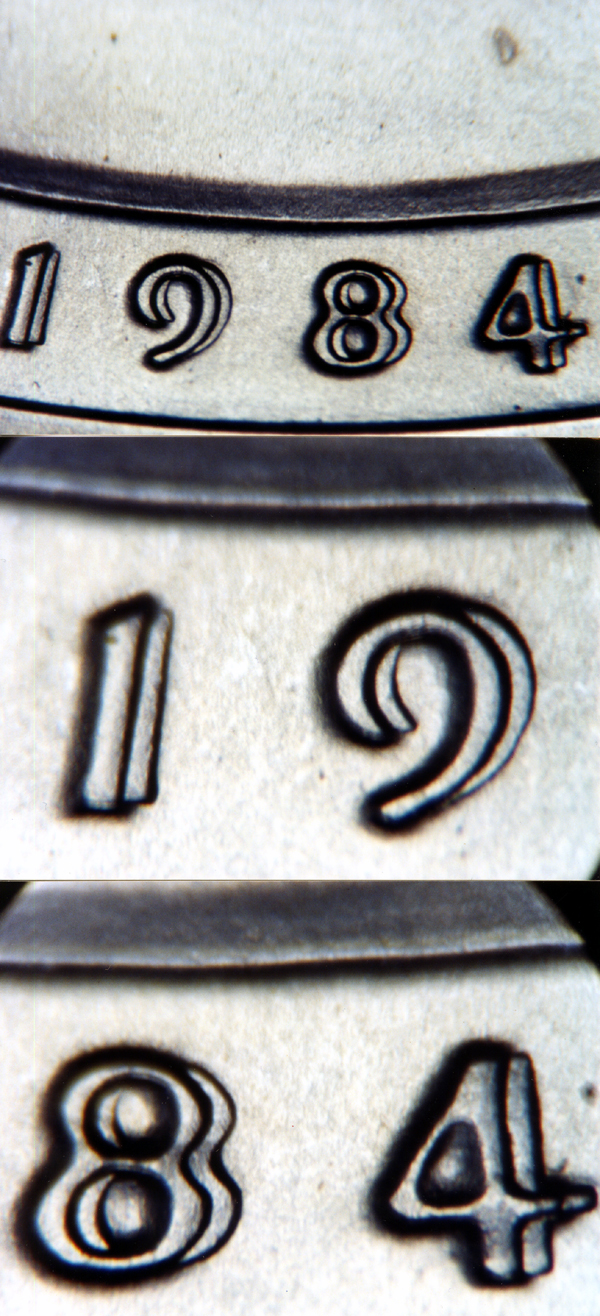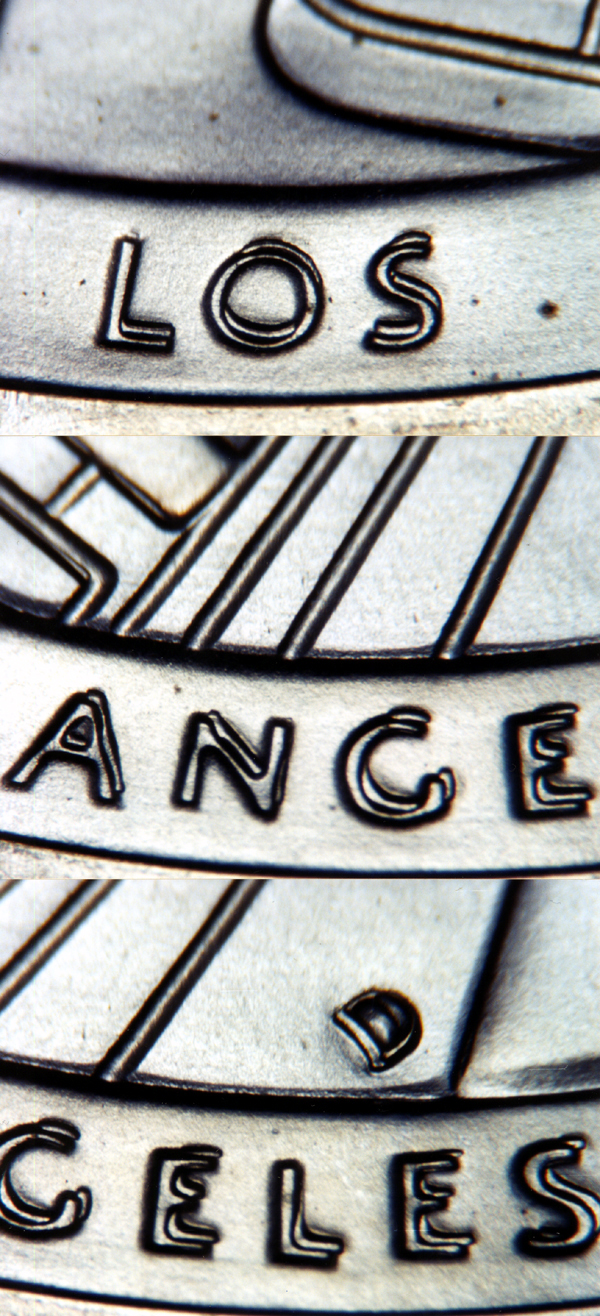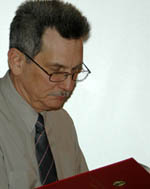|
|
|
|
Incuse
Design Strike Doubling Visited
by Ken Potter - NLG
October 15, 2002
Originally published in Ken Potter's November, 2002 Varieties Notebook
column featured in Coin World


In previous columns, we explained that Strike Doubling is generally accepted to be created by looseness in the press, which in turn causes vibrations to set up during the coining operation. This may cause the upper die to bounce against the struck coin a split second after it is struck resulting in an area of the field parallel to a design (on the die) smashing down a section of raised designs on the coin. Depending on the orientation of the coin on the lower die, (which may shift slightly during ejection) this flat shelf of doubling that borders one side of raised design elements may be found on the obverse and/or reverse and is usually what researchers point to as an identifying diagnostic of strike doubling.
However, in our previous treatments of this subject we have examined variations from this flattened to the field rule, including doubling formed as a design is smashed down a slope, how some design elements in the field that closely border a design may be are raised up into another design area during die bounce, and the effect of a die that slides and pushes metal up the side of a design.
This month we examine a 1984-D Olympic Dollar sent in by Jeffrey Vasington of CT. The doubling on the date and legend bordering the lower rim is outrageously strong and it appears to be a classic example of hub doubling complete with separation lines between the doubled images and a strong notching effect in their corners. Conspicuously absent is the flat shelf-like type of damage typical of strike doubling.
They say: if it walks like a duck and quacks like a duck, then it must be a duck. Thus the doubling shown here must be hub doubling! Right? Wrong! It's Strike doubling! While the doubling seems to break all the rules of what we have learned to expect strike doubling to look like, the answer is simple and easy to understand.
Unlike the majority of coins that boast raised images, the effected elements noted above are incuse designs on this coin and are thus raised on the die. Since they are raised on the die, any bouncing of this portion of the die into the coin will be exactly like a hub or punch sinking images into a die blank! The result is an effect exactly like that found on a doubled die yet it is simply another manifestation of strike doubling as form of damage that adds no value to a coin!
Other design areas on the coin that are raised in the typical fashion we are used to encountering on U.S. coins, such as the Mint Mark; L of LIBERTY and IN of IN GOD WE TRUST, exhibit typical flattened down strike doubling.
Ken Potter is the official attributor of world doubled dies for the Combined Organizations of Numismatic Error Collectors of America and for the National Collectors Association of Die Doubling. He also privately lists other collectable variety types on both U.S. and world coins in the Variety Coin Register. More information on either of the clubs or how to get a coin listed in the Variety Coin Register may be obtained by sending a long self addressed envelope with 99c postage or by contacting him via email at KPotter256@aol.com An educational image gallery may be viewed on his website at www.koinpro.com
For more information on this item click below:
Send email to: KPotter256@aol.com
Return To Ken Potter's Variety Vault
Visit Ken Potter's Educational Image Gallery

Free counters provided by Andale.